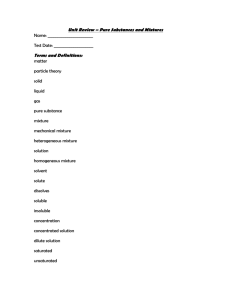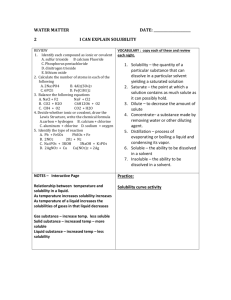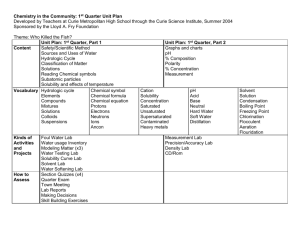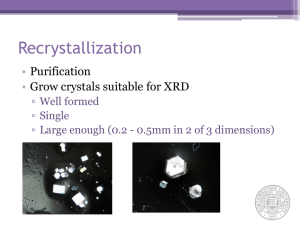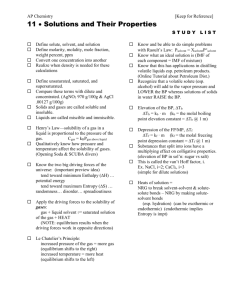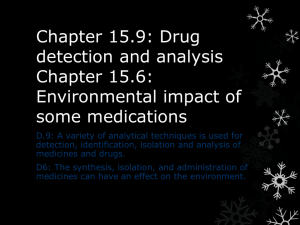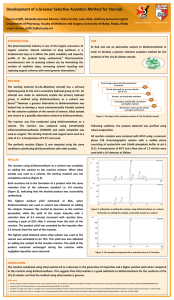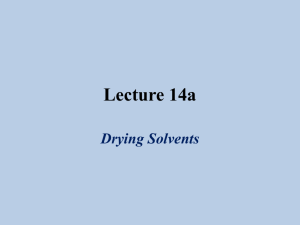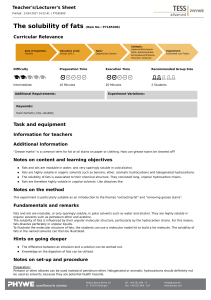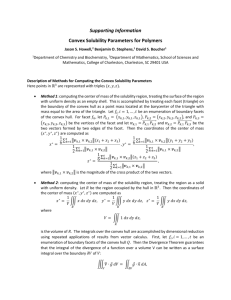(1)-2 Miscibility of solvents (1)-3 Table of solubility characteristics
advertisement
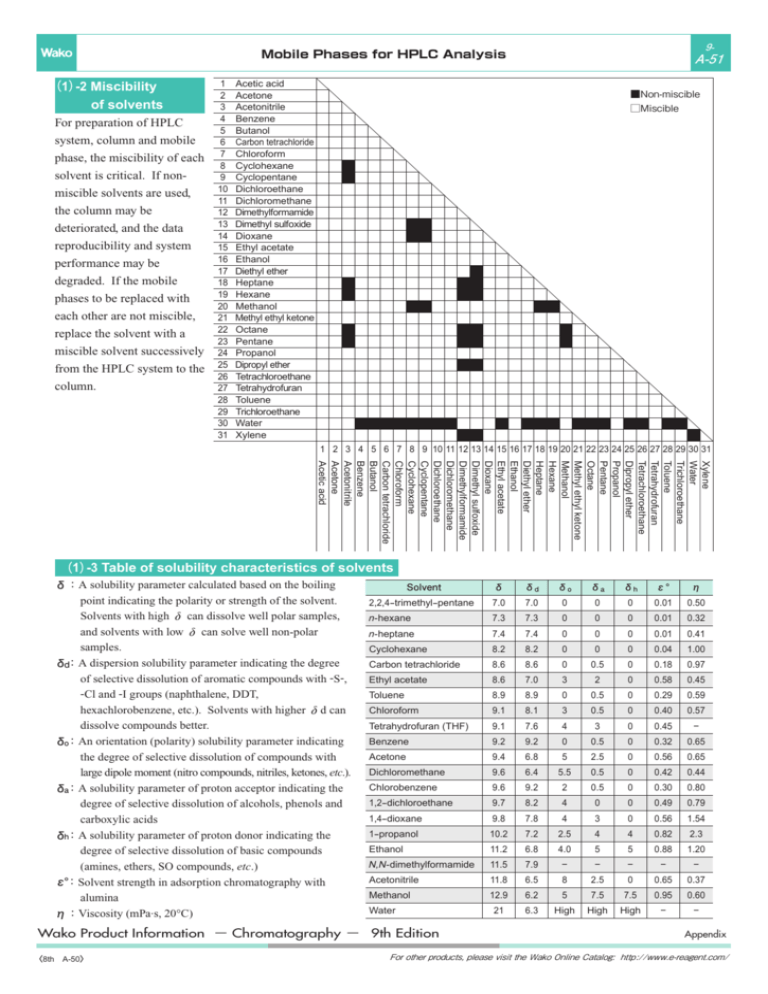
9- Mobile Phases for HPLC Analysis (1)-2 Miscibility of solvents For preparation of HPLC system, column and mobile phase, the miscibility of each solvent is critical. If nonmiscible solvents are used, the column may be deteriorated, and the data reproducibility and system performance may be degraded. If the mobile phases to be replaced with each other are not miscible, replace the solvent with a miscible solvent successively from the HPLC system to the column. 1 2 3 4 5 6 7 8 9 10 11 12 13 14 15 16 17 18 19 20 21 22 23 24 25 26 27 28 29 30 31 A-51 Acetic acid Acetone Acetonitrile Benzene Butanol Carbon tetrachloride Chloroform Cyclohexane Cyclopentane Dichloroethane Dichloromethane Dimethylformamide Dimethyl sulfoxide Dioxane Ethyl acetate Ethanol Diethyl ether Heptane Hexane Methanol Methyl ethyl ketone Octane Pentane Propanol Dipropyl ether Tetrachloroethane Tetrahydrofuran Toluene Trichloroethane Water Xylene ■Non-miscible □Miscible 1 2 3 4 5 6 7 8 9 10 11 12 13 14 15 16 17 18 19 20 21 22 23 24 25 26 27 28 29 30 31 Xylene Water Trichloroethane Toluene Tetrahydrofuran Tetrachloroethane Dipropyl ether Propanol Pentane Octane Methyl ethyl ketone Methanol Hexane Heptane Diethyl ether Ethanol Ethyl acetate Dioxane Dimethyl sulfoxide Dimethylformamide Dichloromethane Dichloroethane Cyclopentane Cyclohexane Chloroform Carbon tetrachloride Butanol Benzene Acetonitrile Acetone Acetic acid (1)-3 Table of solubility characteristics of solvents δ:A solubility parameter calculated based on the boiling point indicating the polarity or strength of the solvent. Solvents with high δ can dissolve well polar samples, and solvents with low δ can solve well non-polar samples. δd:A dispersion solubility parameter indicating the degree of selective dissolution of aromatic compounds with -S-, -Cl and -I groups (naphthalene, DDT, hexachlorobenzene, etc.). Solvents with higher δd can dissolve compounds better. δo:An orientation (polarity) solubility parameter indicating the degree of selective dissolution of compounds with large dipole moment (nitro compounds, nitriles, ketones, etc.). δa:A solubility parameter of proton acceptor indicating the degree of selective dissolution of alcohols, phenols and carboxylic acids δh:A solubility parameter of proton donor indicating the degree of selective dissolution of basic compounds (amines, ethers, SO compounds, etc.) ε° :Solvent strength in adsorption chromatography with alumina η:Viscosity (mPa.s, 20°C) Solvent δ δd δo δa δh ε° η 2,2,4-trimethyl-pentane 7.0 7.0 0 0 0 0.01 0.50 n- hexane 7.3 7.3 0 0 0 0.01 0.32 n- heptane 7.4 7.4 0 0 0 0.01 0.41 Cyclohexane 8.2 8.2 0 0 0 0.04 1.00 Carbon tetrachloride 8.6 8.6 0 0.5 0 0.18 0.97 Ethyl acetate 8.6 7.0 3 2 0 0.58 0.45 Toluene 8.9 8.9 0 0.5 0 0.29 0.59 Chloroform 9.1 8.1 3 0.5 0 0.40 0.57 Tetrahydrofuran (THF) 9.1 7.6 4 3 0 0.45 − Benzene 9.2 9.2 0 0.5 0 0.32 0.65 Acetone 9.4 6.8 5 2.5 0 0.56 0.65 Dichloromethane 9.6 6.4 5.5 0.5 0 0.42 0.44 Chlorobenzene 9.6 9.2 2 0.5 0 0.30 0.80 1,2-dichloroethane 9.7 8.2 4 0 0 0.49 0.79 1,4-dioxane 9.8 7.8 4 3 0 0.56 1.54 1-propanol 10.2 7.2 2.5 4 4 0.82 2.3 Ethanol 11.2 6.8 4.0 5 5 0.88 1.20 N,N- dimethylformamide 11.5 7.9 − − − − − Acetonitrile 11.8 6.5 8 2.5 0 0.65 0.37 Methanol 12.9 6.2 5 7.5 7.5 0.95 0.60 21 6.3 High High High − − Water Wako Product Information − Chromatography − 9th Edition 〈8th A-50〉 Appendix For other products, please visit the Wako Online Catalog: http://www.e-reagent.com/
